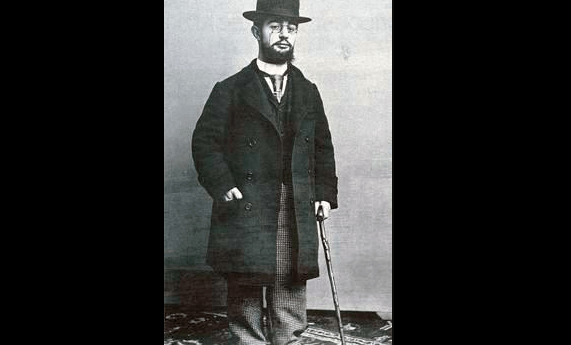Henri Marie Raymond of Toulouse-Lautrec, born on November 24, 1864, in Albi, France, left an indelible mark on the art world as a painter, draftsman, and poster artist. Despite physical challenges stemming from a childhood disease, Toulouse-Lautrec’s passion for art thrived, fueled by the support of his aristocratic family. His stature may have been diminished, but his artistic vision soared, capturing the vibrant energy of Parisian nightlife in the late 19th century.
Toulouse-Lautrec Early Years and Artistic Influences
Born into an aristocratic family, Toulouse-Lautrec faced health challenges from an early age. His parents’ divorce in 1868 left him in the care of his mother, and the family moved to Paris in 1873. Despite a disease affecting the development of his bones, Toulouse-Lautrec’s childhood and adolescence were marked by a calm and happy demeanor. His interest in art blossomed during these years, influenced by the artistic environment around him.
In the late 1870s, he began his artistic journey under the guidance of notable painters like René Princeteau, Léon Bonnat, and Fernand Cormon. It was during this period that he crossed paths with post-impressionist painters like Émile Bernard, Louis Anquetin, and Vincent van Gogh, whose influence would shape Toulouse-Lautrec’s unique style.
Artistic Career and Bohemian Lifestyle
Opening his workshop in Montmartre in 1885, Toulouse-Lautrec dove into his artistic productions, drawing inspiration from the evolving Parisian art scene. Influenced by the likes of Edgar Degas and Japanese ukiyo-e prints, his works showcased a blend of colors, focused compositions, and captivating scenes.
Toulouse-Lautrec was not just an observer but an active participant in the bohemian life of Montmartre. His regular presence in cafes, theaters, dance halls, and even brothels provided rich material for his art. The late 1880s saw the development of his style, evident in works like “At the Cirque Fernando” (1888), which vividly portrayed the enchanting world of the circus.
Moulin Rouge and Poster Design
In the 1890s, Toulouse-Lautrec turned his attention to the Moulin Rouge, creating iconic works like “Dance at the Moulin Rouge” (1890) and “Jane Avril. Garden of Paris” (1893). Jane Avril, a dancer, became his muse during this period. The artist also delved into poster design, producing striking pieces for cabarets and commercial products. His innovative approach laid the groundwork for the future of poster art.
Health Decline and Late Works
As the 1890s drew to a close, Toulouse-Lautrec’s health deteriorated due to excessive alcohol consumption. Hospitalized in 1899 for ethyl detoxification, he continued to experiment with colors and artificial light. The final years of his career produced works like “Madame Poupoule at Her Dressing Table” (1898) and “The Bed” (1898), reflecting a deepening sense of melancholy.
The artist’s last creations, such as “At the Rat Mort” (1899) and “In the Bois de Boulogne” (1901), mirrored the crisis he was undergoing. Henri de Toulouse-Lautrec passed away on September 9, 1901, leaving behind a legacy of art that continues to captivate audiences worldwide.
FAQs:
Q1: What influenced Toulouse-Lautrec’s art?
A1: Toulouse-Lautrec’s art was influenced by post-impressionist painters like Vincent van Gogh, Edgar Degas, and the Japanese ukiyo-e prints.
Q2: Who was Jane Avril?
A2: Jane Avril was a dancer and muse for Toulouse-Lautrec during the 1890s, inspiring several of his iconic works.
Q3: What characterized Toulouse-Lautrec’s late works?
A3: Toulouse-Lautrec’s late works reflected a decline in health and a deepening sense of melancholy, evident in pieces like “At the Rat Mort” (1899) and “In the Bois de Boulogne” (1901).






Leave a Reply